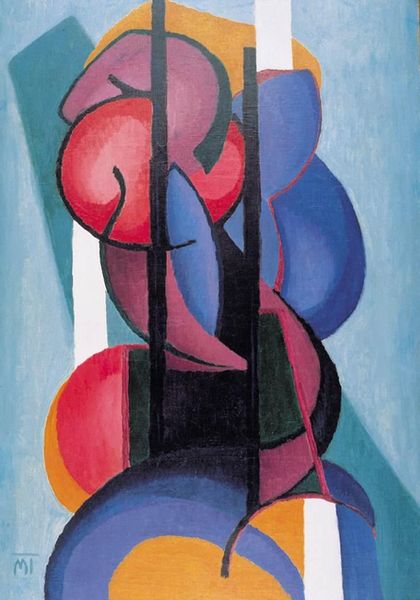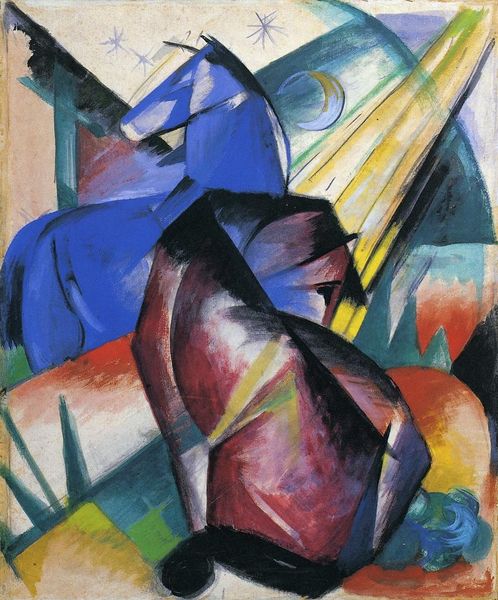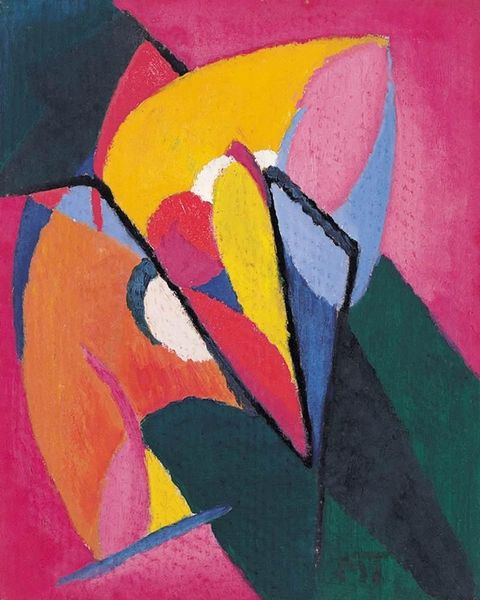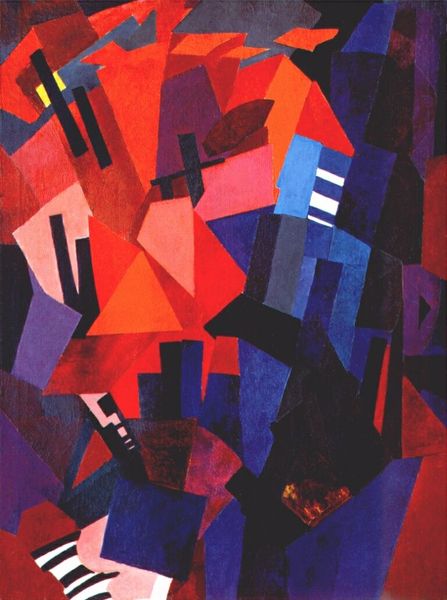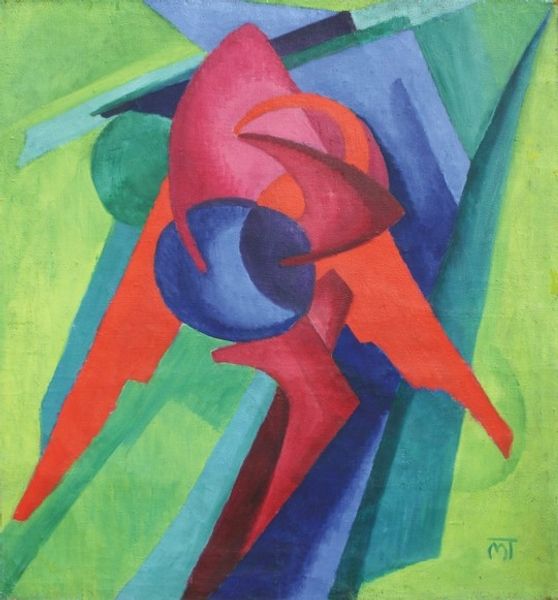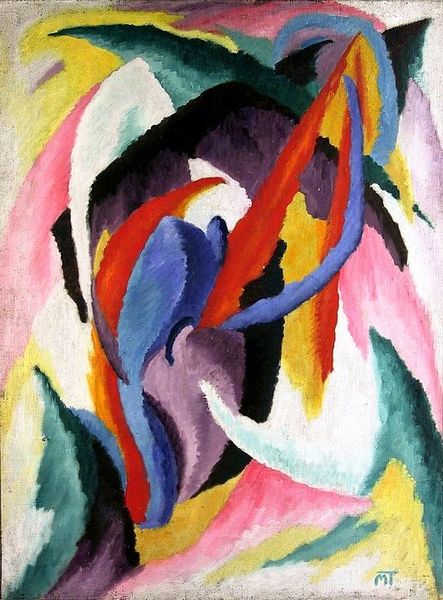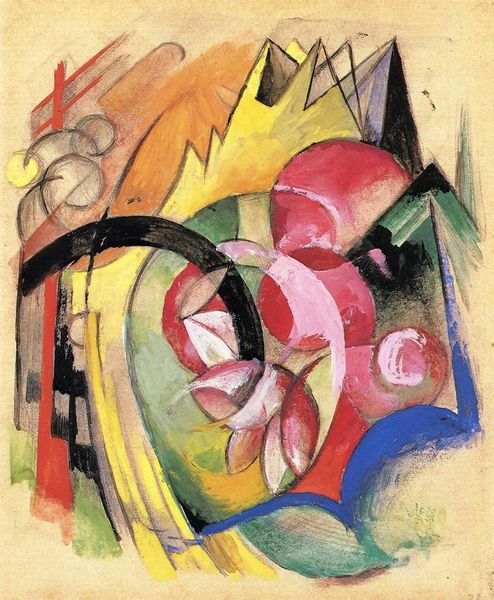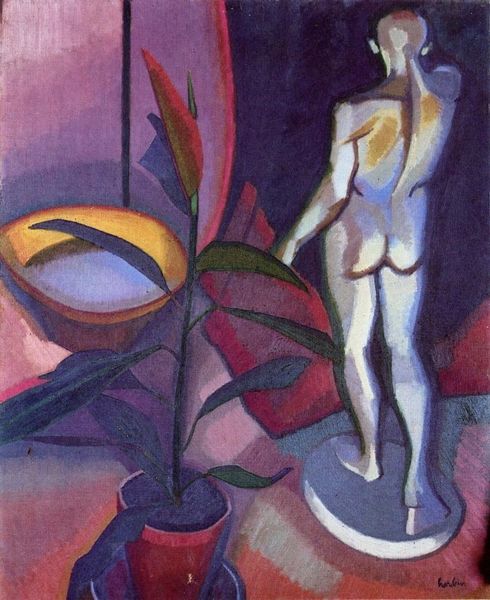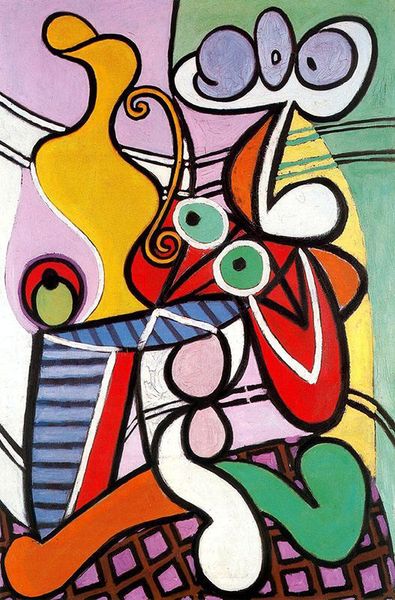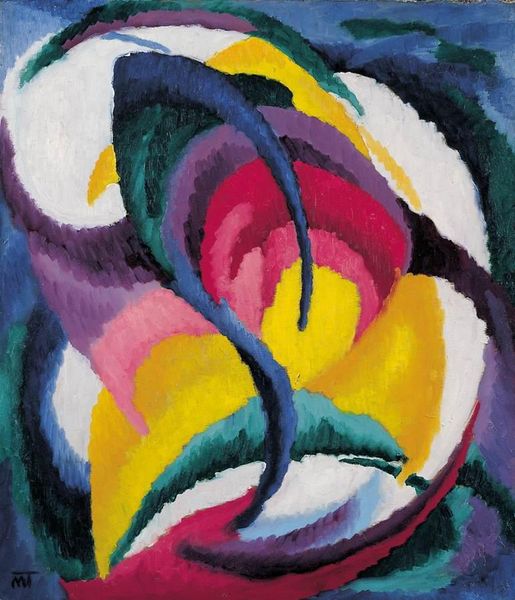
Copyright: Public domain US
Editor: Here we have Janos Mattis-Teutsch’s "Composition," from 1922, rendered in ink. The strong geometric forms and color palette give it a real sense of dynamism, almost agitation. What do you see in this piece? Curator: This piece vibrates with the anxieties and utopian longings of its time. Mattis-Teutsch was working in the aftermath of World War I, and his art reflects a desire to rebuild and reimagine society. The fractured forms, rendered in intense reds and purples, speak to the disruptions caused by the war, while also hinting at a yearning for spiritual and social harmony. Do you notice how the geometric shapes seem to both clash and coalesce? Editor: Yes, there’s a real tension there. It feels very… internal. Almost like the shapes are battling within a contained space. Curator: Exactly. And what could that internal struggle represent, do you think? Consider the context of the 1920s, a period marked by profound shifts in social norms, gender roles, and political ideologies. The angularity could be seen as a visual language for breaking free from old conventions, while the recurring circular forms might represent a search for wholeness or the cyclical nature of history. Editor: So, it’s not just abstract shapes, but a reflection of the era’s turmoil and aspirations painted with color and form. How interesting! Curator: Indeed. The power of abstraction lies in its ability to bypass the literal and speak directly to our emotions and subconscious. Mattis-Teutsch offers a visual poem about finding balance amid chaos. Editor: I see it so differently now. The turmoil makes sense, and I hadn't considered the yearning for peace within it. Curator: That's the beautiful thing about art; it sparks conversations, challenges our perceptions, and connects us to the past and each other.
Comments
No comments
Be the first to comment and join the conversation on the ultimate creative platform.
